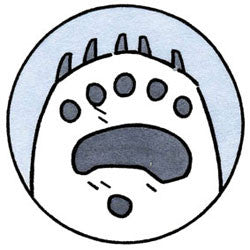Free Shipping within USA
Free Shipping within USA
February 24, 2017
Polar bears live on the ice covered seas of the Arctic and are specially adapted to survive in the extreme conditions there. Winter temperatures can drop to -50 F! They have a lot of interesting features that help them thrive in this harsh wilderness of ice.




Polar bears are excellent swimmers. With powerful arms and shoulders and a streamlined shape they can swim great distances and are quite at home in the water.

Polar bear cubs are born in the Winter months, November through January. They are born in snow dens. The mother digs the den in October and then hibernates. Often two cubs are born, but the size of a litter can range from 1 to 3 cubs. Polar bear cubs weigh around 1 pound at birth.
Cubs and mother emerge from their den in the Spring. The cubs stay with their mother about 2 years, sometimes into a third year, while she teaches them how to hunt, swim, dig, find shelter, and all the other important skills necessary to survive.
Polar bears are so protected from the cold that they can easily overheat. It takes a lot of energy for them to move fast so they usually amble along in a distinctive, easy pace. They can sprint up to 40 mph for short periods of time.
They prefer to ambush their prey from a still position, which is most often seals. They commonly hunt for seals by waiting by breathing holes in the sea ice.
Polar bears of the most carnivorous of the bears. They mostly rely on seal blubber. They also eat kelp, grasses, belugas, walruses, carrion (such as beached whales), lemmings, eggs, and will scavenge for garbage if nearby towns.
Unlike other bears, polar bears do not hibernate - they hunt year round (with the exception of pregnant females).
Sources
Alaska Wilderness League
North American Bear Center
Polar Bears International
National Wildlife Federation
National Geographic News
Great Bear Almanac by Gary Brown
Read More Illustrated Animal Facts
Polar Bear art prints and cards in the shop
Save

